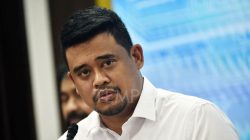Pakistan, July 5 — The shortage of teachers in Sindh has long been a pressing and critical issue. This challenge has not only compromised the quality of education but has also significantly hindered access to schooling for children in remote and underdeveloped areas. Adding to this concern is the lack of continuous, professional training for educators, which directly affects learning outcomes and the long-term development of students.
The current leadership of the Pakistan Peoples Party (PPP) has been acutely aware of these dual challenges. For the Sindh Government, education has always remained a top priority because it firmly believes that education is the cornerstone of national progress. The PPP’s commitment to education goes far beyond rhetoric. It is visible in practical, far-reaching steps that aim to increase literacy, restore functionality in public schools, and enhance the overall quality of education across the province. From the nationalisation of educational institutions during Zulfikar Ali Bhutto’s era to Benazir Bhutto’s visionary “Parho Pakistan” campaign, the party’s historical legacy underscores a deep-rooted focus on making education accessible to the common citizen. Ensuring that children from poor and marginalised communities receive a quality education has always been an integral part of the PPP’s manifesto. A recent example of this commitment is the 12.4% increase in Sindh’s education budget for 2024-25, signalling the government’s determination to address the growing needs of this vital sector. The increased allocation is intended to meet infrastructure needs, enhance student learning, and enable new recruitment and training programs across the province.
Pakistan’s Largest-Ever Teacher Recruitment Drive
One of the most transformative initiatives undertaken by the Sindh Education Department in recent years has been the completion of Pakistan’s largest teacher recruitment campaign, resulting in the hiring of over 93,000 teachers. This includes 65,147 Primary School Teachers (PSTs) and 27,701 Junior Elementary School Teachers (JESTs).
Importantly, the recruitment drive has given employment to over 31,000 women, a major step forward in promoting gender equality and women’s economic empowerment in Sindh. These appointments will not only improve the teaching environment in schools but also serve as inspiration for young girls across the province to pursue education and professional careers.
The newly recruited teachers are being posted to 41,129 government schools across Sindh. As a direct result of this initiative, over 5,000 non-functional schools-previously closed due to the lack of teaching staff-have now been reactivated and made operational again.
Transparent and Inclusive Process
The recruitment process was conducted through a fully transparent and merit-based system. In March 2021, the Sindh government announced the vacancies via a third-party mechanism managed by IBA Sukkur, a respected independent testing authority. Written tests were conducted in multiple rounds, and only those who passed were issued offer letters based purely on merit. This transparency has elevated trust in the process and created thousands of dignified employment opportunities, particularly for talented youth from disadvantaged and rural communities. In one notable example, four sisters from the same family cleared the exam and were selected as teachers, a testament to both fairness and the commitment of families to education.
Inclusivity was another cornerstone of the drive. Among the 93,000 newly appointed educators, 1,330 special persons and 2,100 candidates from minority groups have been recruited. The pool of successful candidates also includes PhD holders, engineers, and other highly qualified professionals, illustrating the growing appeal and respect associated with the teaching profession in Sindh.
Training, Deployment, and Infrastructure Enhancement
Following this large-scale recruitment, the Sindh Government has initiated a series of teacher training programs to enhance professional capacity. These training sessions focus on modern pedagogical techniques, curriculum revisions, classroom management, and child psychology. By investing in human capital, the government aims to ensure that every student receives quality education from well-prepared educators.
Furthermore, to ensure that schools in remote regions are staffed and remain functional, the government is working on improving facilities in hard-to-reach areas. This includes providing staff accommodations, ensuring the availability of clean water, electricity, and internet connectivity, and enhancing school infrastructure damaged by floods or long-term neglect.
In parallel, rehabilitation of flood-affected schools is ongoing. The torrential rains and floods of recent years severely damaged hundreds of educational institutions, especially in rural areas. Restoration work has already been completed in several districts, and many more are in progress. The government has prioritised rebuilding classrooms, repairing roofs, and ensuring basic WASH (Water, Sanitation, and Hygiene) facilities are functional.
Improved Student-Teacher Ratio and Long-Term Impact
Before this recruitment, the education sector in Sindh faced a critical situation: thousands of teachers retired annually, and a lack of new appointments over several years resulted in massive teacher shortages. This led to the shutdown of thousands of schools and declining educational outcomes. Now, with the onboarding of 93,000 new teachers, Sindh’s student-teacher ratio has improved to 34.59, and it is expected to improve further in upcoming phases of the recruitment and training program. More importantly, this move will help reduce the burden on existing teachers, allow for subject specialisation, and create a more balanced and supportive classroom environment for students. The broader goal is not just to fill vacant posts, but to build a resilient, inclusive, and forward-looking education system that delivers both access and quality. The Sindh Government is also focused on sustaining these improvements through continuous monitoring, community engagement, and capacity building within the education department.
Conclusion: A New Chapter for Sindh’s Education Sector
The successful completion of this historic recruitment campaign is more than a hiring exercise-it is a strategic intervention to revive and strengthen Sindh’s public education system. The Pakistan Peoples Party, true to its legacy, has once again shown that governance backed by vision, transparency, and equity can deliver results that matter.
From creating opportunities for youth to empowering women, to reopening long-abandoned schools, the impact of this initiative is already reshaping the educational landscape. But more than that, it is instilling hope in communities that have long been deprived of the basic right to education.
With continuous effort, sustained investment, and an unwavering commitment to reform, Sindh is now firmly on the path to building an inclusive, quality-driven education system for all.







